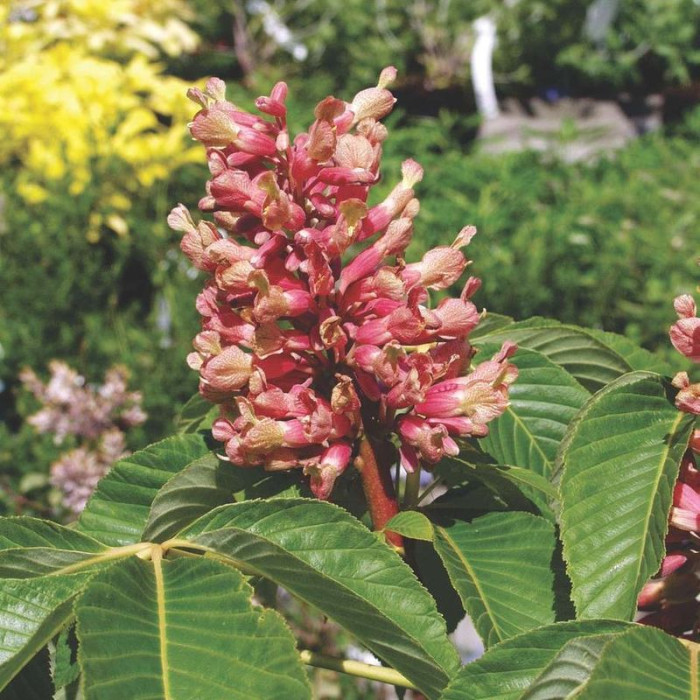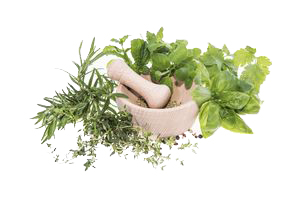Red horse chestnut or pavia horse chestnut / Aesculus pavia - is a tree of the horse chestnut genus from the horse chestnut family. Often found in the undergrowth of birch-magnolia forests and on the cliffs of rivers with wooded banks. The height of the tree is from 2,4 to 3 meters. The genus includes about 25 species of deciduous trees, widespread in nature (family Horse-chestnut). Representatives of the genus grow in Europe, India, East Asia and North America. The decorative leaves of this breed are very characteristic - large, ornamental, palmately complex, dark green. Thanks to them, the crown looks thick and dense.
The plants are decorated with very spectacular inflorescences and uniquely shaped fruits - tricuspid, spiny, with 1-3 seeds. The leaves are medium-sized, green, consisting of 5 leaflets 10-14 centimeters long. The flowers are very attractive, bright red, collected in paniculate inflorescences 15-16 centimeters long. The fruits are small, naked.
It grows relatively quickly. Photophilous. Prefers nutritious, fairly moist soils. Moderately frost-resistant, can withstand temperatures down to -25-28°C without damage. Species plants reproduce well by seeds, which require preliminary stratification for 3-4 months. Among the vegetative methods, reproduction by root suckers is used. Reproduction by grafting is possible.
Plants remain decorative throughout the entire growing season. They are good in alleys, group and single plantings on the lawn, the edge of the forest, as part of free-growing hedges, in the front corners of the garden.
Growing horse chestnut pavia
Chestnuts are propagated in shifts; sowing occurs in the spring. When sowing in autumn, it is rarely successful, since there are a lot of mice at this time.
As for storing seeds, wet sand is best suited for them; the seeds should be sown in late April and early May, the planting depth should be about 8 cm. The sowing norm is 40 pieces per linear meter. Growing large-sized material can take up to fifteen years, all because in the first years the seedlings grow very slowly. At this age, the plant tolerates transplanting well with a clod of earth.
Up to 10 years, you can plant without a clod of soil, if a good excavation has been carried out and the root system has been preserved. Don't forget about abundant watering. Chestnut planting should be done in early spring or autumn, and it should not be delayed, then the plants will take root well. The distance between them should be up to 6 m. The soil for planting should contain turf and leaf soil, as well as sand, in a ratio of 2:1:1, the optimal acidity is 6,0-7,5. If the site has acidic soils, it is worth adding lime. If water transmission is poor, drainage is required: a layer of sand up to 15 cm.
The plant should be fertilized; for this, in early spring, add a solution of 1 kg of mullein and 15 g of urea diluted in 10 liters of water; in the fall, fertilizing with 15 g of nitroammophoska is required, also for 10 liters.
Chestnuts need to be watered regularly, especially during the dry summer season. When weeding, the soil needs to be loosened. The tree trunk circle should be mulched with wood chips, peat compost or peat with a layer of up to 10 cm. Do not forget to clean the trees of top shoots and dry branches.
Very often, chestnuts have to deal with a dangerous mite pest; for prevention, it will be necessary to treat them every two weeks with karbofos 90 g per 10 liters or fitover 2 g per liter. Decoctions of dissected hogweed and black henbane are excellent in the fight against these pests. To get rid of spotting, you can treat with 1% Bordeaux mixture or 2% foundationazole. In winter, it is best to cover the root collar of young seedlings with fallen leaves. The first couple of years after planting, the headquarters of grafted plants should be wrapped in a layer of burlap. If frost holes appear, the cracks require treatment with an antiseptic and the application of garden varnish.

No questions about this product, be the first and ask your question.










